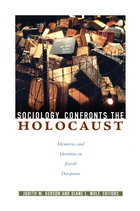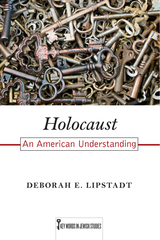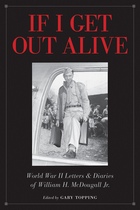Blatman’s book is to be welcomed, not least as the subject of the death marches has rarely featured in the long historiography of the Third Reich. He sets out not only to explain and contextualise, but also to correct a few misconceptions… The Death Marches is an excellent history. Blatman has researched assiduously, using trial records and survivor testimonies. He presents his research in a very accessible way. He is scrupulously even-handed, giving due credit to those Polish, Czech and German civilians who gave succour to the unfortunates, as well as highlighting the actions of those who did not. In particular Blatman deserves praise for providing a highly nuanced interpretation of events: one that avoids the assumption that the death marches simply constituted the final stage of the Holocaust. The gruesome chapter that he outlines was clearly in large part the result of the mentality and the practices that had brought about the genocide against the Jews. Yet by 1945 the murders surrounding the death marches formed part of a much wider phenomenon—no less brutal and scarcely less exterminatory—but one in which Jews were no longer the primary victims.
-- Roger Moorhouse History Today
[An] admirable new book… Blatman convincingly demonstrates that the spirit of genocide that Germans had brought with them to Eastern Europe had returned, by the end of the war, to the German heartland itself… Blatman chronicles, authoritatively, an important chapter in the history of Nazi Germany. But because the death marches and associated massacres do not fit our presumptions about genocide, his important book opens again the crucial question of the 20th century: why we kill.
-- Timothy Snyder Wall Street Journal
Though some historians have treated the ‘death marches’ as the last chapter of the Final Solution, Blatman himself subtitles his book ‘The final phase of Nazi genocide.’ One main thrust of this important book is to situate the ‘death marches’ more broadly as the last chapter of the Nazi concentration camp system. One of Blatman’s most important contributions is to make historical sense out of an increasingly chaotic situation, to provide structure and order to his narrative of a multifaceted and fragmented phenomenon… Blatman’s book allows us to clarify the relationship between the fate of the Jews and the death marches more sharply than before… The Holocaust (understood as the Jewish experience of persecution from 1933 to 1945), the Final Solution (understood as the conscious Nazi attempt to murder every last Jew in their grasp), and the death marches certainly overlapped in terms of Jewish victims and Nazi perpetrators, but it is the great merit of Daniel Blatman’s book—in both its massive empirical base and analytical framework—that these necessary distinctions for historical clarity can now be made.
-- Christopher R. Browning Times Literary Supplement
Blatman’s is a pathbreaking book on an issue that in effect has not been the subject of any serious research in any language. The writer examines the death marches, on foot and in open railway cars, in the harsh winter of the final year of World War II, based on huge quantities of documentary material in a large number of languages. Blatman’s conclusions are controversial, because he claims that this entire German initiative was in itself genocide, separate from and preceded by the Holocaust. The marches’ victims included not only Jews, although we can reasonably assume that they were the majority, though not a large majority. The book contributes a great deal to our understanding of the marches, the war, and everything related to the Holocaust.
-- Yehuda Bauer Haaretz
As Nazi control contracted in the last months of World War II, the determination of German soldiers and civil servants to slaughter inmates of the concentration camps did not diminish. This meticulously researched study details the way they kept killing after the war was obviously lost. As Allied, especially Soviet, soldiers advanced into Germany, ideologically motivated murderers were joined by people who believed the starving columns of prisoners stumbling through their communities were a threat that justified wholesale slaughter. This is a significant contribution to the scholarship of genocide, demonstrating how brutes killed to the end and how they were joined by men with no record of racist violence when the Nazi cause was obviously lost.
-- Stephen Matchett The Australian
It’s hard to come up with a new historical thesis about the Holocaust or Nazism, fields of study that are already jam-packed with researchers. But groundbreaking studies do appear every now and then, studies that offer a different interpretation of familiar historical events and can change the way we understand history. Daniel Blatman’s The Death Marches is such a work… Daniel Blatman’s book is monumental, not only because of its breadth but also because of the enormous variety of sources it relies on, collected by the author from more than 20 archives in six European countries and the United States. It is a masterpiece of historical work, its power stemming not only from its scope but also from the radical insights it offers on its subject.
-- Boaz Neumann Haaretz
[This is] the first comprehensive analysis of this final but no less deadly Nazi assault against Jews and other persecuted and incarcerated groups. Drawing on vast archival materials from across Europe and the testimonies of those who led, those who witnessed, and those who suffered under the marches, Blatman seeks to understand why the Nazis perpetrated these deadly evacuations of prisoners in the waning days of the war, and how they fit into the broader genocidal objectives of the era. Far from seeing the evacuations as merely a tragic footnote in the chaotic last days of the Nazi regime, Blatman argues that the marches constituted their own distinct phase of genocide. In so doing he raises the provocative questions about Nazi ideology, the concentration camp system from which the marches emerged, and the varied means and mechanisms of genocide.
-- Jewish Book World
[An] impressive and comprehensive account of the death marches… One of the many impressive things about this book is the author’s determination to offer a rational explanation of the motives that drove so many to participate in this final phase of Nazi genocide. It is one of many ways in which Blatman forces us to reconsider our views of the last phase of the war, the changing dynamics of the Nazi regime, the attitude towards it of ordinary Germans, and indeed the nature and causes of genocide itself. This is a masterly work of lasting value whose importance far transcends that of the research, itself remarkable, that it presents. It is essential reading for anyone concerned with Nazism, the Holocaust, or genocide in general.
-- Richard J. Evans Times Higher Education
An important contribution to understanding the Nazi regime and the Holocaust.
-- H. P. Langerbein Choice
Blatman’s assertion, not shared by all historians, that the death marches must be seen as the logical result of Nazi policies helps place the story of concentration camps more firmly into the history of the Holocaust… It’s an important read for specialists and students of modern genocide.
-- Frederic Krome Library Journal
Blatman’s searing account of the last days of the Holocaust focuses on the forced marches designed to keep prisoners of the Nazi regime from liberation by the Allies… In this litany of horror, Blatman describes the evil that bland bureaucrats can generate.
-- Publishers Weekly
This outstanding book is the first comprehensive, systematic study of the final phase of the murderous regime implemented by the Third Reich. Blatman provides heartrending descriptions of the cruelties experienced by the evacuees and of the strategies they employed to cope with the lethal conditions of the forced marches. He also offers the best summary available of the system of concentration and labor camps and the relation of that system to the mass murder of European Jewry.
-- David Engel, author of In the Shadow of Auschwitz
A strikingly original work that breaks important new ground on the murderous evacuations, at the end of the Second World War, of more than a quarter of a million prisoners westward from concentration camps and elsewhere in the east. Blatman not only provides an overlooked history of these slaughters, he shows how the gruesome deportations involved not just Jews, but many other groups. Surveying this horrific history, he proposes new answers to questions about the place of these killings in the history of Nazi criminality and wartime German society. This book amplifies our understanding of the Holocaust and illuminates the disintegration of the Third Reich.
-- Michael R. Marrus, author of Some Measure of Justice





























